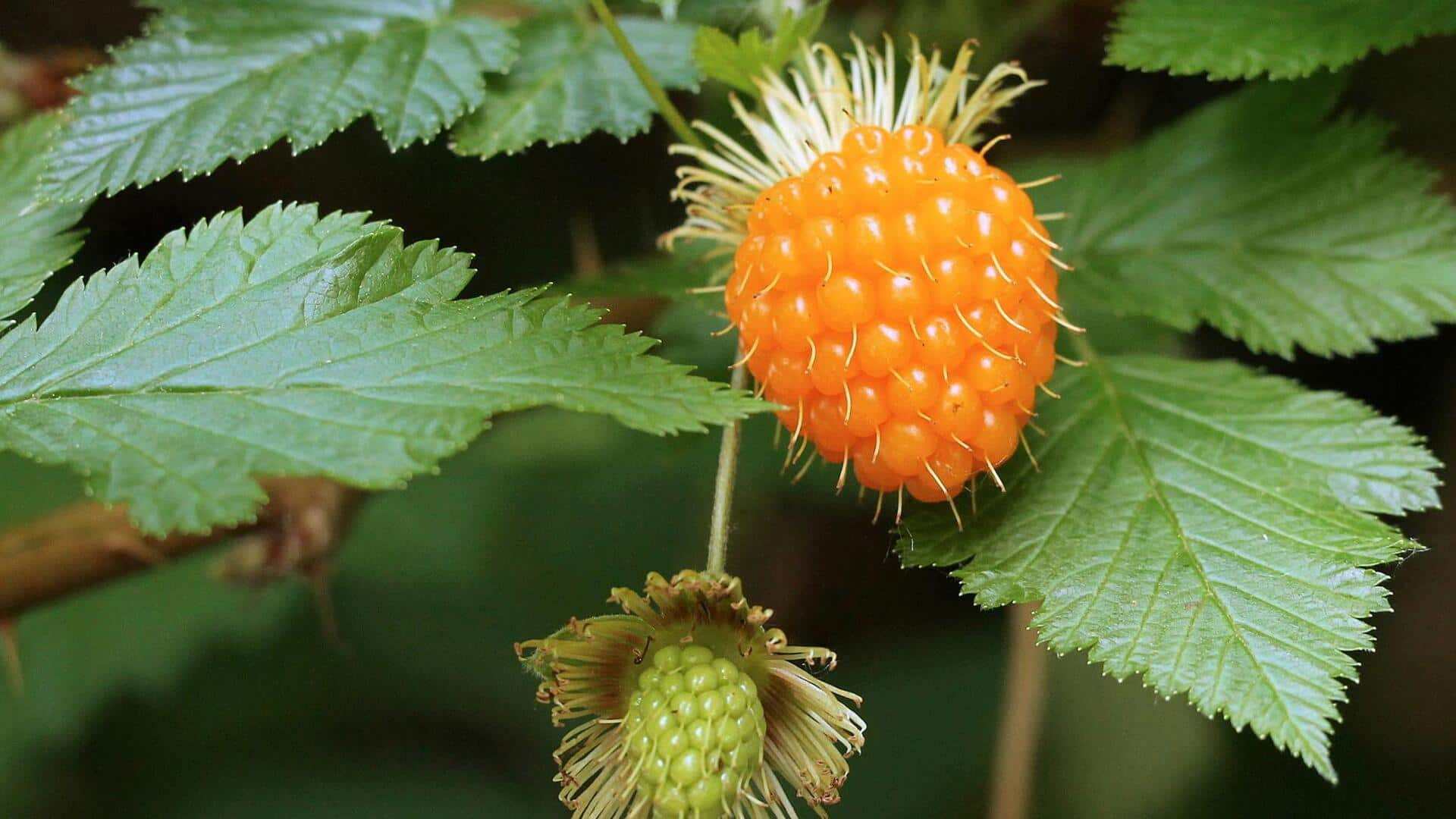
Tips and tricks for growing salmonberry bushes at home
What's the story
Growing salmonberry bushes indoors can be a rewarding experience for gardening enthusiasts who want a piece of nature indoors.
These colorful plants, with their vivid berries, can grow well indoors with proper care.
By knowing what salmonberry bushes require- the amount of light, soil, watering schedule, temperature, you can create an ideal home for them to thrive indoors.
Container selection
Choosing the right container
Selecting the right container is critical to growing salmonberry bushes indoors.
Choose pots that are minimum 12 inches in diameter to provide sufficient room for the plant's roots to expand.
Make sure that the containers have drainage holes to avoid waterlogging, which can damage the plant's roots.
Place a saucer under each pot to catch excess water and keep indoor surfaces safe from damage.
Soil needs
Soil requirements
Salmonberry bushes thrive in well-draining soil that is rich in organic matter.
A mixture of peat moss, perlite, and potting soil will give a perfect balance of nutrients and drainage capabilities.
You can also add compost or aged manure to further improve soil fertility.
Ensure to regularly check soil moisture levels; the soil should remain consistently moist but not soggy to support healthy growth.
Light preferences
Light conditions
These plants flourish in bright, indirect sunlight when grown indoors.
Keep them close to windows where they get filtered light all day long without direct exposure that could scorch leaves or dry out soil too quickly.
If natural lighting falls short during winters or on cloudy days, think about using grow lights made specifically for indoor gardening purposes.
Watering tips
Watering schedule
When growing salmonberries indoors, it's important to stay properly hydrated, as both overwatering and underwatering can lead to risks such as root rot or dehydration, respectively.
Water thoroughly once the top inch feels dry, allowing excess to drain completely before the next session takes place, roughly every seven days, depending on ambient humidity levels in your household setting itself.